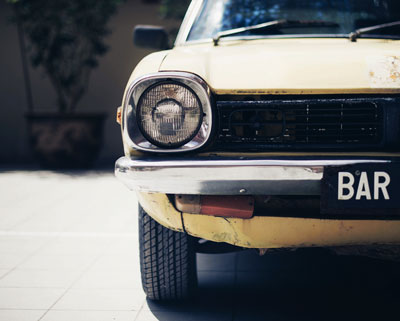Winter is coming
6
NOVEMBER, 2017
It isn’t just a saying from Game of Thrones. Winter really is on its way, so winterise your car while there’s still time.
Most modern cars are designed to handle inclement weather. Whether it’s rain, snow, wind or fog, there are mechanisms built into your vehicle to help you handle whatever rolls your way. That being said, you have to maintain your car so that all the bells ‘n’ whistles work when you need them the most. Here’s a list of our top recommendations to get your car ready for winter.

Replace Your Car Fluids
Buy a fluid tester so that you can make sure the following are filled to the maximum line.
Coolant
Make sure you have the proper antifreeze/water mixture so that fluids don’t freeze in your radiator on the coldest days of the year. Your owner’s manual should include all the information you need about the proper mixture.
Engine Oil
Check your oil. Some mechanics also claim that a thinner oil is helpful if you live in super cold climes, so if you want to take their advice, change your oil, too. In fact, it’s a good idea to change your oil whether you change the type or not, simply to make sure that you’re ready to take on whatever road you’re on.
Wiper fluid
Don’t forget to make sure you’ve stocked up on freeze-resistant windscreen wiper fluid. Roads with grit and melting snow always make the screen dirty, and you don’t want to be caught out with poor visibility.
Replace your windscreen wipers
A lot of people tend to forget how grimy windscreens get in the winter. Change your windscreen wipers so you start the season with fresh blades. That will make it easier to see regardless of the elements. It’ll also make it better to drive through the soupy muck left on the road after plows come through, which contain a ton of salt and sand that tends to limit visibility through the windscreen.
Check your tyre pressure and treads: replace your tyres if needed
On wet or slippery roads, worn tyres, or ones with low air pressure, can lead to accidents. Plus, cold weather causes the pressure in your tires to decrease just a bit. Check your owner’s manual for the recommended PSI (pounds per square inch) of your tyres. You’ll need a tyre gauge for this. Tyre tread depth has to be above 1.6mm to be legal and has to be the case for the middle three quarters of the tyre. Check this with a 20p coin – place one in the treads of your tyres and if you can’t see the outer band of the coin, your treads should be good to take on whatever weather the season has in store. [RAC]
Should you consider snow tyres?
If you live in a place that gets a lot of snow, it’s time to think about snow tyres for the winter months. Snow tyres help improve traction, or grip, on slippery and snowy surfaces. Most manufacturers recommend you change all four tyres, as the difference between snow and summer tyres may cause problems for your car. You can also consider all-season tyres, which you can use year-round.
Clean your battery posts
Your car’s battery capacity can be limited in the coldest temperatures. Check your battery cables for breaks and cracks, and make sure the terminals are fit snugly, with no loose connections. You can also check your battery fluid by uncovering
“…you have to maintain your car so that all the bells ‘n’ whistles work when you need them the most.” ?️
This is where Where’s My Dipstick comes in.
Whether you’re looking for general information, or are a little more advanced, you’ll have a one-stop shop at your fingertips so you can take matters into your own hands – and get comfortable under the bonnet.
FURTHER READING





